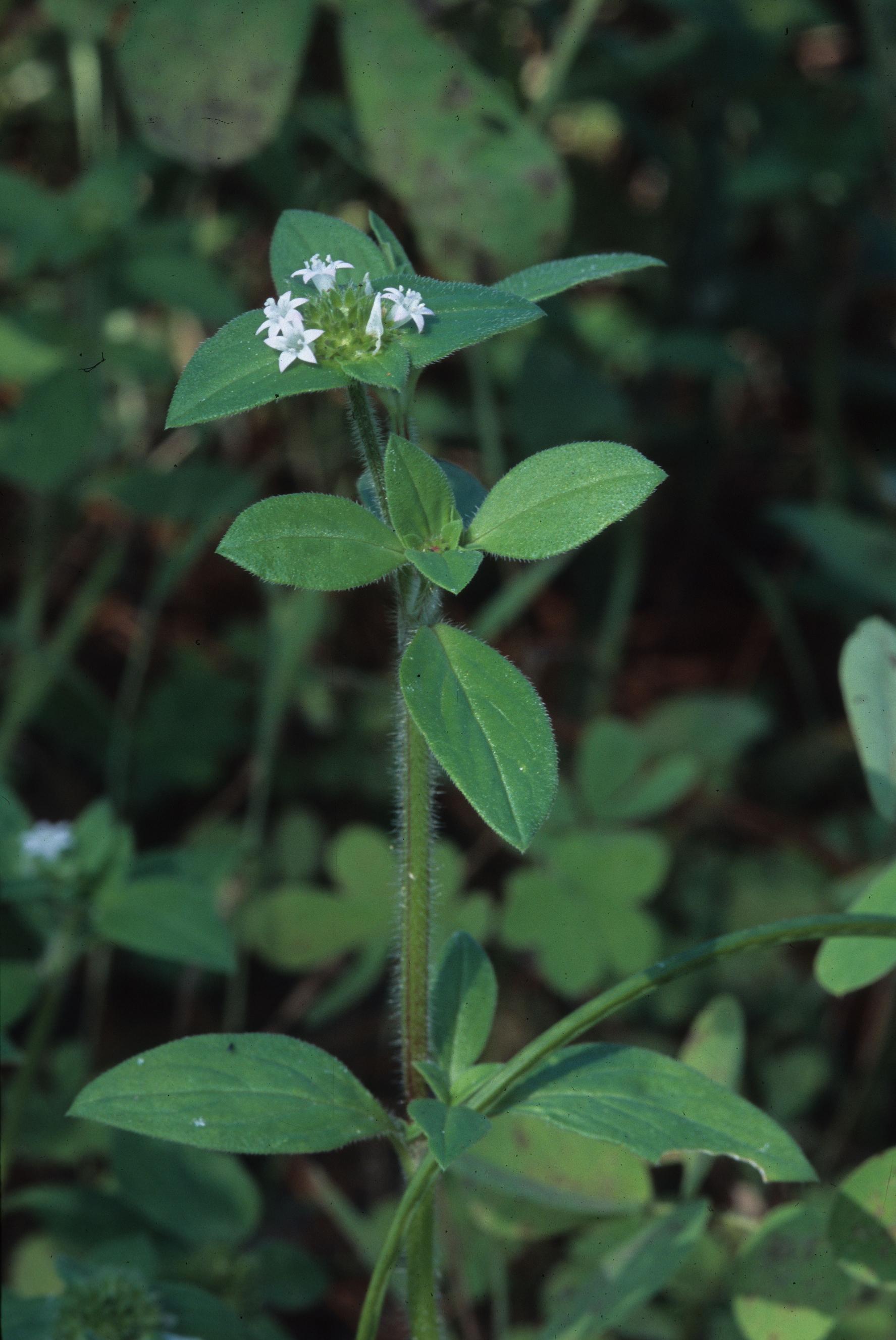Difference between revisions of "Richardia scabra"
| Line 19: | Line 19: | ||
==Description== | ==Description== | ||
<!-- Basic life history facts such as annual/perrenial, monoecious/dioecious, root morphology, seed type, etc. --> | <!-- Basic life history facts such as annual/perrenial, monoecious/dioecious, root morphology, seed type, etc. --> | ||
| + | Common name is Rough Mexican Flower (Nelson 2006). | ||
==Distribution== | ==Distribution== | ||
| + | Observed in South Carolina Coastal Plain (Lewis and Harshbarger 1976). | ||
==Ecology== | ==Ecology== | ||
===Habitat=== <!--Natural communities, human disturbed habitats, topography, hydrology, soils, light, fire regime requirements for removal of competition, etc.--> | ===Habitat=== <!--Natural communities, human disturbed habitats, topography, hydrology, soils, light, fire regime requirements for removal of competition, etc.--> | ||
| + | Fine sandy loams, poorly drained with slow permeability (Lewis and Harshbarger 1976). Found in vacant lots, roadsides, abandoned fields, and other dry, disturbed sites (Nelson 2006). | ||
===Phenology=== <!--Timing off flowering, fruiting, seed dispersal, and environmental triggers. Cite PanFlora website if appropriate: http://www.gilnelson.com/PanFlora/ --> | ===Phenology=== <!--Timing off flowering, fruiting, seed dispersal, and environmental triggers. Cite PanFlora website if appropriate: http://www.gilnelson.com/PanFlora/ --> | ||
| + | Blooms from June through December (Nelson 2006). | ||
===Seed dispersal=== | ===Seed dispersal=== | ||
===Seed bank and germination=== | ===Seed bank and germination=== | ||
===Fire ecology=== <!--Fire tolerance, fire dependence, adaptive fire responses--> | ===Fire ecology=== <!--Fire tolerance, fire dependence, adaptive fire responses--> | ||
===Pollination=== | ===Pollination=== | ||
| + | Deyrup observed these bees, ''Agapostemon splendens, Augochloropsis sumptuosa, Anthidiellum maculatum rufimaculatum, Megachile mendica, M. texana, Apis mellifera,'' and ''Bombus pennsylvanicus'', on ''R. scabra'' (Deyrup et al 2002). | ||
===Use by animals=== <!--Herbivory, granivory, insect hosting, etc.--> | ===Use by animals=== <!--Herbivory, granivory, insect hosting, etc.--> | ||
| + | ''Richardia scabra'' was heavily fed on by Gopher tortoises in agricultural areas of southwestern Georgia (Garner and Landers 1981) | ||
===Diseases and parasites=== | ===Diseases and parasites=== | ||
==Conservation and Management== | ==Conservation and Management== | ||
==Cultivation and restoration== | ==Cultivation and restoration== | ||
==References and notes== | ==References and notes== | ||
| + | *Nelson, Gil. Atlantic Coastal Plain Wildflowers: A Field Guide to the Wildflowers of the Coastal Regions of Virginia, North Carolina, South Carolina, Georgia, and Northeastern Florida. Guilford, CT: FalconGuide, 2006. 159. Print. | ||
| + | *Lewis, C. E. and T. J. Harshbarger. 1976. Shrub and herbaceous vegetation after 20 years of prescribed burning in the South Carolina coastal plain. Journal of Range Management 29:13-18. | ||
| + | *Deyrup, Mark, Jayanthi Edirisinghe, and Beth Norden. 2002. The Diversity and Floral Hosts of Bees at the Archbold Biological Station, Florida (Hymenoptera: Apoidea). Insect Mundi 16.1-3: 87-120. | ||
| + | *Garner, J. A. and J. L. Landers. 1981. Foods and habitat of the gopher tortoise in southwestern Georgia. Proceedings of the Annual Conference of the Southeastern Association of Fish and Wildlife Agencies 35:120-134. | ||
==Photo Gallery== | ==Photo Gallery== | ||
Revision as of 15:16, 17 June 2015
| Richardia scabra | |
|---|---|

| |
| Photo was taken by Gil Nelson | |
| Scientific classification | |
| Kingdom: | Plantae |
| Division: | Magnoliophyta – Flowering plants |
| Class: | Magnoliopsida – Dicotyledons |
| Order: | Rubiales |
| Family: | Rubiaceae |
| Genus: | Richardia |
| Species: | R. scabra |
| Binomial name | |
| Richardia scabra L. | |

| |
| Natural range of Richardia scabra from USDA NRCS Plants Database. | |
Contents
[hide]Description
Common name is Rough Mexican Flower (Nelson 2006).
Distribution
Observed in South Carolina Coastal Plain (Lewis and Harshbarger 1976).
Ecology
Habitat
Fine sandy loams, poorly drained with slow permeability (Lewis and Harshbarger 1976). Found in vacant lots, roadsides, abandoned fields, and other dry, disturbed sites (Nelson 2006).
Phenology
Blooms from June through December (Nelson 2006).
Seed dispersal
Seed bank and germination
Fire ecology
Pollination
Deyrup observed these bees, Agapostemon splendens, Augochloropsis sumptuosa, Anthidiellum maculatum rufimaculatum, Megachile mendica, M. texana, Apis mellifera, and Bombus pennsylvanicus, on R. scabra (Deyrup et al 2002).
Use by animals
Richardia scabra was heavily fed on by Gopher tortoises in agricultural areas of southwestern Georgia (Garner and Landers 1981)
Diseases and parasites
Conservation and Management
Cultivation and restoration
References and notes
- Nelson, Gil. Atlantic Coastal Plain Wildflowers: A Field Guide to the Wildflowers of the Coastal Regions of Virginia, North Carolina, South Carolina, Georgia, and Northeastern Florida. Guilford, CT: FalconGuide, 2006. 159. Print.
- Lewis, C. E. and T. J. Harshbarger. 1976. Shrub and herbaceous vegetation after 20 years of prescribed burning in the South Carolina coastal plain. Journal of Range Management 29:13-18.
- Deyrup, Mark, Jayanthi Edirisinghe, and Beth Norden. 2002. The Diversity and Floral Hosts of Bees at the Archbold Biological Station, Florida (Hymenoptera: Apoidea). Insect Mundi 16.1-3: 87-120.
- Garner, J. A. and J. L. Landers. 1981. Foods and habitat of the gopher tortoise in southwestern Georgia. Proceedings of the Annual Conference of the Southeastern Association of Fish and Wildlife Agencies 35:120-134.